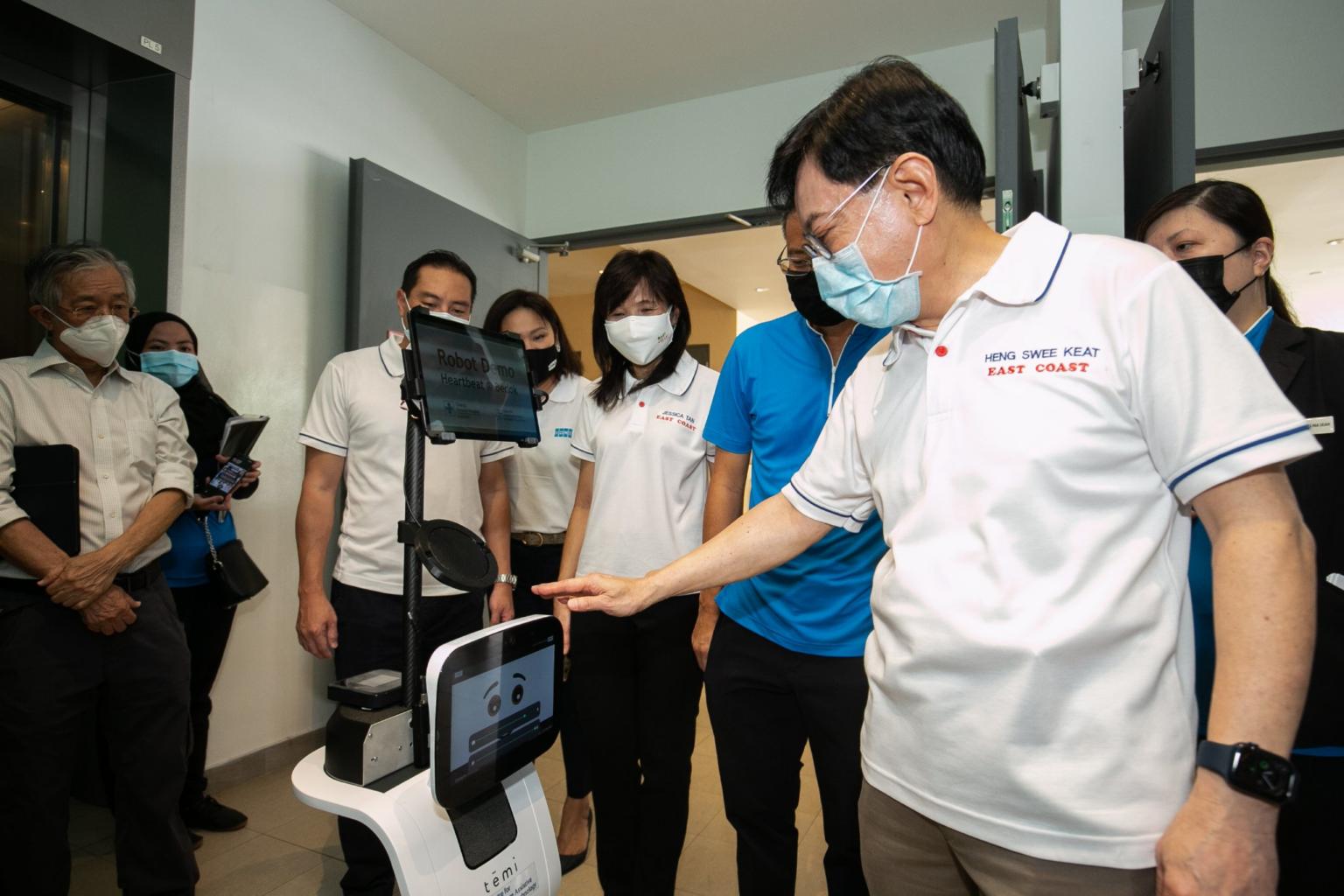New software enables different robots to communicate with each other and building infrastructure
Sign up now: Get ST's newsletters delivered to your inbox

Deputy Prime Minister Heng Swee Keat examining a Temi-Bot, one of the robots used by CGH.
PHOTO: CHANGI GENERAL HOSPITAL/FACEBOOK
Follow topic:
SINGAPORE - When Changi General Hospital (CGH) first started using robots in 2015, it had to build dedicated lifts that the robots could communicate with to move to different floors on their own.
But with the hospital aiming to grow its army of robots, including those that transport patients or deliver items, building new lifts specifically to cater to the many brands of robots is no longer feasible, said CGH chief executive Ng Wai Hoe.
"When we first started using robots, they needed a separate track or system. But as the hospital grows, we can't have different robots requiring different lift systems, for example, to operate," he said.
On Saturday (May 28), a new robotic software, RoMi-H, was launched to provide a common "language" for robots to interact with building infrastructure, such as lifts.
Short for robotics middleware for healthcare, RoMi-H is aimed at enabling robots and building infrastructure to communicate with each other, by adopting a recently launched national standard for such communication.
This way, each time the hospital buys a new robot, it can be programmed to communicate with the existing lifts or automated doors.
RoMi-H was developed by CGH's Centre for Healthcare Assistive and Robotics Technologies, the Integrated Health Information Systems, and engineering firms Hope Technik and Open Source Robotics.
Its development was supported by the Ministry of Health and the National Robotics Programme.
Deputy Prime Minister Heng Swee Keat, who gave a speech at the launch, noted how the fast pace of adoption of industrial robots worldwide - having doubled over the past five years - has introduced challenges in coordinating how they operate in dynamic environments.
Singapore is the second most automated country in the world, after South Korea, with more than 600 industrial robots per 10,000 workers, he added.
"Imagine robots on the move - they not only have to avoid colliding into one another, they also have to avoid the many people, some pushing prams, wheelchairs and carts, walking along the same corridors," he said.
This was what prompted the development of RoMi-H to allow safe and efficient integration of robots in buildings, DPM Heng added.
RoMi-H also allows robots made by different manufacturers to interact with one another so as to operate more seamlessly in a building.
This would come in handy at CGH, for example, where more than 50 robots help with various tasks including surgery and food delivery.
Apart from navigating around people, robots equipped with RoMi-H are also taught to give way to other robots performing more urgent tasks.
For instance, a robot transporting a sick patient would take priority over a droid delivering linens.
"To put it simply, it is a code of conduct in a virtual world that would allow robotic systems of different uses to coordinate and prioritise (their functions) in a seamless fashion," said Professor Ng.
RoMi-H has been trialled at CGH in the last few years and has also been tested at Covid-19 treatment facilities, such as the one at Singapore Expo, since March this year.
The hospital plans to begin implementing RoMi-H in most of its robots and infrastructure by the end of 2022.
The developers are now looking to take this technology to other hospitals and industries beyond healthcare.

